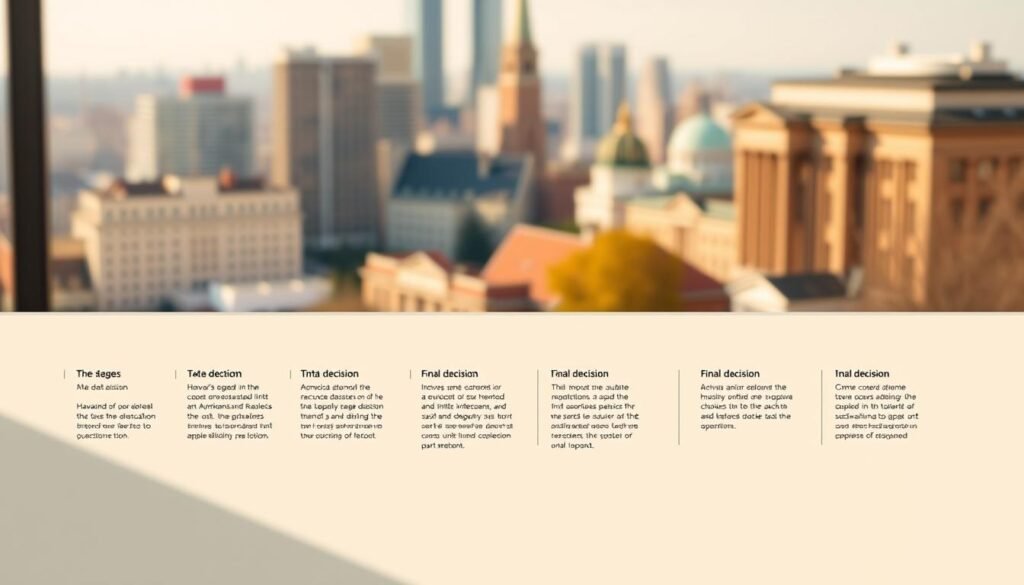
You might feel the weight of this moment already — the hope, the plans, and the question of funding it all. You are not alone in wanting a clear map for admissions and aid.
This guide gives you a step-by-step plan for the 2026 year so you can match milestones to scholarship and fellowship windows. It shows how each program reviews candidates and how that affects your funding strategy.
You will learn how one strong core package can support multiple business school programs. You will also get verified numbers, timelines, and practical next steps to avoid missed deadlines.
For deeper detail on admissions timelines and interview expectations, see this resource on how to prepare your file and reflections: how to get into Harvard Business. Start here, act early, and keep your goals in view.
Start here: admissions timelines, eligibility, and what “needs-blind” means
Plan the year around admissions windows so your materials and funding steps stay ahead of deadlines.
You will map the 2025–2026 timeline by working backward from likely Round 1 and Round 2 dates. This gives you time for tests, referees, and polished essays. It also creates room to target separate fellowships that close fast after decisions.

2025–2026 admissions windows and aligning your scholarship planning
Set milestones for tests, resumes, and recommenders. Leave time post‑submission for interviews and quick reflections so momentum stays high. Budget using the Cost of Attendance cap and note that tuition is set for the year.
Needs‑blind at MIT Sloan vs. holistic review at Harvard Business School
MIT Sloan evaluates candidates needs‑blind: ability to pay is not considered at admission and funding is discussed after you enroll. HBS uses a holistic review with a written file, a 30‑minute interview by invitation, and a required post‑interview reflection within 24 hours.
Who should apply: domestic students, international students, and reapplicants
Domestic and international students should confirm eligibility for loans and post‑offer fellowships. If you are a reapplicant, apply only if your profile shows clear, material improvement that affects funding chances.
- Align your narrative, resume, and recommenders with each program’s expectations.
- Prepare multiple funding routes so you don’t rely on one outcome.
Harvard/MIT MBA scholarships application
Build a core dossier now so you can pivot quickly between school portals and external award forms. This saves time and keeps your funding options open when deadlines compress.
Core documents you’ll prepare for both schools
- One resume with quantified bullets that highlight leadership and scope for admissions readers and award committees.
- Standardized test scores, transcripts, and a compact goals statement that fits each program.
- Recommender briefs and evidence packets so referees speak to shared competencies across portals.
- A documents vault (proof of citizenship, employer verification) to speed post‑decision funding steps for students.
Coordinating school submissions with fellowships and scholarships
For HBS, submit the written application by the deadline and prepare for an invite‑only interview plus a 24‑hour post‑interview reflection. For Sloan, expect funding details after acceptance: automatic internal fellowships, then OGE‑managed external awards and loan options via the Graduate Loan Application and FAFSA.
Keep a tracker for deadlines and model aid scenarios using the Cost of Attendance cap. This lets you target the right awards and stage financial documents early so you can complete each submission quickly.

Your HBS path: application, interview, and post-interview reflection
Begin with a polished written file and a clear timeline so your interview and reflections fall into place.
Submitting the written application by the deadline
You must upload every document online by the deadline. This includes your resume, essays, test scores, recommendations, and activities. Finalize data so reviewers can see leadership and impact clearly.
Interview by invitation: format, purpose, and what it signals
Interviews are 30 minutes and by invitation only. An Admissions Board member who read your file conducts the interview. On‑campus, hub city, or Zoom formats do not change evaluation. An invite is a positive signal but not a guarantee.
Post-interview reflection within 24 hours: what to expect
You must submit a short written reflection through the system within 24 hours. Draft concise examples before the interview so you can respond quickly and accurately.
Fee waivers: need-based options that reduce the cost
If cost limits you, apply for the need‑based fee waiver. It lowers the cost to apply while preserving full review of your materials.
| Format | Length | Effect on candidacy |
|---|---|---|
| On‑campus | 30 minutes | No advantage; same assessment |
| Hub city | 30 minutes | Convenient; neutral to outcome |
| Zoom | 30 minutes | Equally valid; plan logistics carefully |
Your MIT Sloan path: acceptance first, then the three-tiered financial aid process
When your offer arrives, funding becomes a step-by-step workflow you must follow quickly and clearly.
Tier one: After admission, every incoming student is automatically considered for Sloan and MIT department fellowships and scholarships. Some awards are granted without action. Others need a short post‑offer form or a supplemental essay. Track which awards require separate steps so you don’t miss deadlines.
Tier two: external fellowships and the OGE pathway
The Office of Graduate Education lists external fellowships and helps you apply. If you win outside funding, submit the OGE Fellowship Intake Form so the award is credited to your account.
Tier three: federal and private loans
All students must complete the Graduate Loan Application to establish loan eligibility. U.S. citizens and permanent residents also file the FAFSA (MIT Title IV code 002178). Do both early to avoid delays in disbursement.
Understanding the Cost of Attendance cap
Budget using the published tuition of $89,000 for 2025–2026, which includes a $2,200 program fee. Textbooks and living costs sit outside the program fee and should be added to your plan.
| Step | Action | Who |
|---|---|---|
| Automatic review | Internal fellowships considered | Student funding office |
| External awards | Apply via OGE & submit Intake Form | OGE / you |
| Loans | Graduate Loan App + FAFSA if eligible | Financial aid teams |
Note the key difference from other schools: admission is needs‑blind, and funding packaging begins only after you accept. For timing or complex cases, email studentfunding.mitsloan@mit.edu. Build a post‑offer checklist so you can move through fellowships, external awards, and loans without gaps.
Scholarships, fellowships, and assistantships to target for the 2026 year
A clear awards strategy helps you stack support from school funds, external fellowships, and assistantships.
Merit fellowships on admission: Eligible students are reviewed automatically. Admissions decisions typically include notice of any merit funding based on academic excellence, work impact, and community potential.
Separate-application awards:
- Aker Scholarship – full cost and living for candidates tied to Norway.
- Fundación Rafael del Pino – full tuition for two Spanish engineering graduates; apply within 20 days of admission.
- Kennedy Scholarship – for British students across qualifying programs.
- Legatum Center – for entrepreneurs launching ventures in low‑income countries.
- MIT‑CSC – PRC citizens; stipend, tuition, fees, and airfare.
Special programs, veterans, and assistantships
LGO and Social Impact: LGO offers industry-funded fellowships for the dual degree. Social Impact Fellowships fund summer internships; apply in April of year one.
Veterans: Yellow Ribbon provides a $25,000 school scholarship plus a $25,000 VA match. Contact Josh DeMaio for details.
| Type | Who | Timing |
|---|---|---|
| Merit fellowships | All admitted students | Notified with admission |
| Separate awards | Country- or mission-specific applicants | Apply within post-offer windows |
| TA / RA roles | Second-semester students | Faculty selection; variable |
Next steps to strengthen your candidacy and fund your MBA
Transform your goals into a 12‑week sprint that sequences tests, essays, recommenders, and funding checks. Build weekly tasks so you submit early and preserve time for interview prep and scholarship addenda.
Draft an achievements inventory that quantifies leadership and outcomes. Share structured talking points with recommenders and model a funding stack that targets tuition, living cost, and specific awards.
Pre‑identify external fellowships via school lists and OGE resources, pre‑assemble documents for loan forms, and file any fee waivers you qualify for. Practice data‑backed stories and reserve 24 hours for a post‑interview reflection.
Create a living calendar that tracks every deadline. Use it to protect time, avoid gaps in funding, and finish the admission process with confidence.